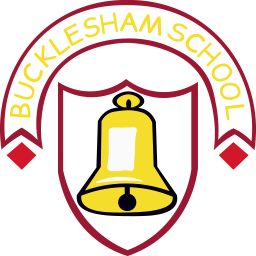Year 5
These are the key skills that each child will be working towards in Year 5.
By the end of Year 5, children should be able to confidently:
Number and place value:
- read, write, order and compare numbers to at least 1 000 000 and determine the value of each digit
- count forwards or backwards in steps of powers of 10 for any given number up to 1 000 000
- interpret negative numbers in context, count forwards and backwards with positive and negative whole numbers, including through zero
- round any number up to 1 000 000 to the nearest 10, 100, 1000, 10 000 and 100 000
- solve number problems and practical problems that involve all of the above
- read Roman numerals to 1000 (M) and recognise years written in Roman numerals.
Addition and Subtraction:
- add and subtract whole numbers with more than 4 digits, including using formal written methods (columnar addition and subtraction)
- add and subtract numbers mentally with increasingly large numbers
- use rounding to check answers to calculations and determine, in the context of a problem, levels of accuracy
- solve addition and subtraction multi-step problems in contexts, deciding which operations and methods to use and why.
|
|
Multiplication and Division:
|
Fractions, decimals and percentages:
- compare and order fractions whose denominators are all multiples of the same number
- identify, name and write equivalent fractions of a given fraction, represented visually, including tenths and hundredths
- recognise mixed numbers and improper fractions and convert from one form to the other and write mathematical statements > 1 as a mixed number [for example, 2/5 + 4/5 = 6/5 = 1 and 1/5 ]
- add and subtract fractions with the same denominator and denominators that are multiples of the same number
- multiply proper fractions and mixed numbers by whole numbers, supported by materials and diagrams read and write decimal numbers as fractions [for example, 0.71 = 71/100 ]
- recognise and use thousandths and relate them to tenths, hundredths and decimal equivalents
- round decimals with two decimal places to the nearest whole number and to one decimal place
- read, write, order and compare numbers with up to three decimal places
- solve problems involving number up to three decimal places
- recognise the per cent symbol (%) and understand that per cent relates to ‘number of parts per hundred’, and write percentages as a fraction with denominator 100, and as a decimal
- solve problems which require knowing percentage and decimal equivalents of 1/2 , 1/4 , 1/5 , 2/5 , 4/5 and those fractions with a denominator of a multiple of 10 or 25.
Measurement:
- convert between different units of metric measure (for example, kilometre and metre; centimetre and metre; centimetre and millimetre; gram and kilogram; litre and millilitre)
- understand and use approximate equivalences between metric units and common imperial units such as inches, pounds and pints
- measure and calculate the perimeter of composite rectilinear shapes in centimetres and metres
- calculate and compare the area of rectangles (including squares), and including using standard units, square centimetres (cm2 ) and square metres (m2 ) and estimate the area of irregular shapes
- estimate volume [for example, using 1 cm3 blocks to build cuboids (including cubes)] and capacity [for example, using water]
- solve problems involving converting between units of time
- use all four operations to solve problems involving measure [for example, length, mass, volume, money] using decimal notation, including scaling.
Geometry - properties of shapes:
- identify 3-D shapes, including cubes and other cuboids, from 2-D representations
- know angles are measured in degrees: estimate and compare acute, obtuse and reflex angles
- draw given angles, and measure them in degrees (o )
- identify:
- angles at a point and one whole turn (total 360o )
- angles at a point on a straight line and 1/2 a turn (total 180o )
- other multiples of 90o
- use the properties of rectangles to deduce related facts and find missing lengths and angles
- distinguish between regular and irregular polygons based on reasoning about equal sides and angles.
Geometry - position and direction:
- identify, describe and represent the position of a shape following a reflection or translation, using the appropriate language, and know that the shape has not changed.
Statistics:
- solve comparison, sum and difference problems using information presented in a line graph
- complete, read and interpret information in tables, including timetables.
